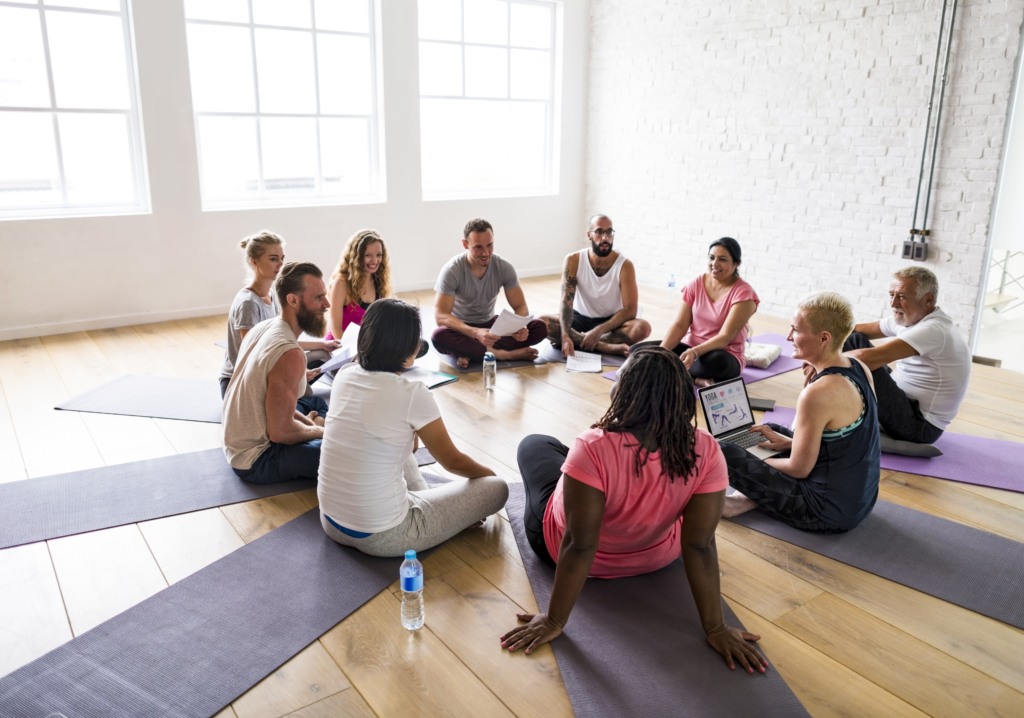Structure of Yoga Studio Workshops
Yoga Workshop Structure: Creating Engaging and Transformative Experiences: Every yoga studio wants to create an engaging and transformative experience in their workshops. This post will give you some ideas to set yourself up for success.
Workshops are an essential part of the yoga studio. As yoga teachers, it’s important to convey lessons that will help our students in their lives. What we teach also needs to be a tool or skill that we incorporate into our own lives—this makes the yoga teaching authentic.
When preparing your workshops for your yoga studio, you need to consider structure and time frame. People have short attention spans and need breaks. Present new concepts, then give students time for experience and practice. This can allow for students to take the skill home and use it on their own.
Whatever the topic becomes, make this a personal experience for the individuals. Have them walk away hearing, feeling, seeing something new that is relevant to them or to their practice. It can be a new approach to practicing pranyama or ways to modify so they can finally get into a handstand or arm balance. You want your students to walk away with something new.
But what is the most effective way to create an experience that will allow for an independent, usable skill? Our goal is for students to walk away with a learning, and to be able to apply it to the real-world experience.
Aim at one understanding for each yoga workshop
Bring together the teaching, or Dharma, with the physical experience. Make the message clear and repeatable. This creates the engagement and allows for the transformation to start.
For example: discuss meditation and its benefits, and how that can impact your life. Practice with them, a guided meditation. Then, let the asana practice be a representation of moving through life. Refer back to the concepts of the meditation during the asana.
Encourage your students to maintain the stillness of meditation within the asana—similar to maintaining stillness in daily life.
For a 3 hour workshop:
- 1/3 dedicate to the lesson
- 2/3 dedicate to the practice
Center the first 1/3 of the yoga workshop around the lesson, the Dharma. This is the teaching of yoga or concept that we can apply to our everyday lives.
The second 2/3 of the workshop should center around experiential learning. This portion is where teachers can explain how to incorporate the lesson into everyday life through practice. Linking the philosophy in the first 1/3 of the workshop with the physical experience in the second 2/3 of the workshop creates and integrated experience.
Asana-Centered workshops
- Pranayama
- Asana
- Meditation
1/3 of an asana centered workshop is the setup, preparing students for what they will experience, and providing a little background and dharma teaching. “We are learning [this] and [this] is why and how it can help you in your life.” Engagement….transformation.
In a 2-hour session, you can easily conduct asana workshops instead of a 3-hour session, maintaining the same 1/3 and 2/3 breakdown: discussing topics leading to a typical asana class, with cueing related to the discussion.
Sometimes 2 hour workshops sell even easier and faster than 3 hour workshops, as they are less of a time and financial commitments.
Workshops at yoga studios are an essential component of teaching your students the depth of the yoga practice. Much of our regular yoga classes are asana and breath awareness. Workshops allow for deeper study and practice. This structure engages them fully and involves them in their transformative process.
How might you create a yoga workshop structure that is engaging and transformative?
If you would like more articles like this click here



Comments are closed